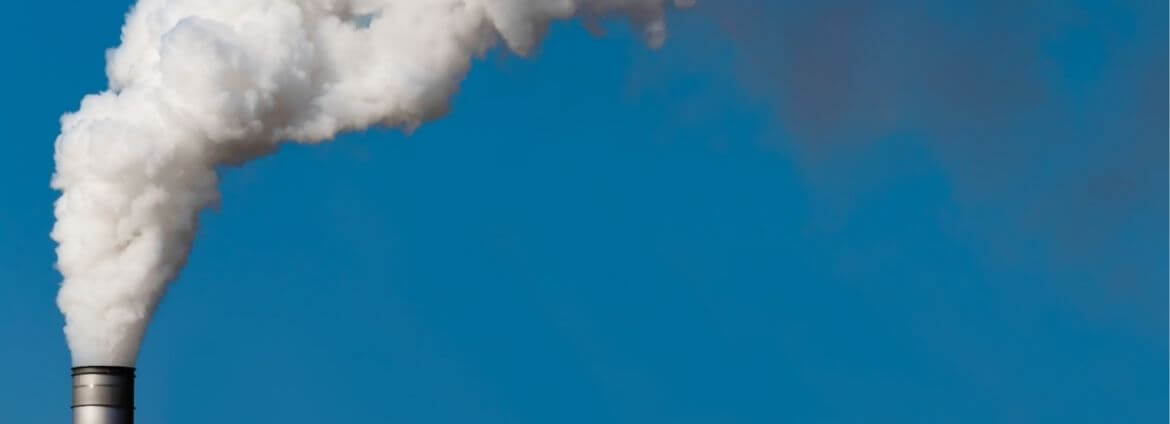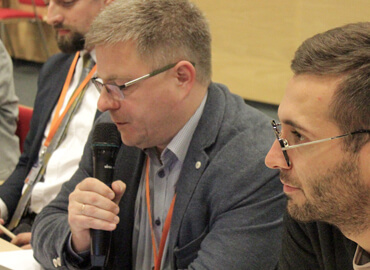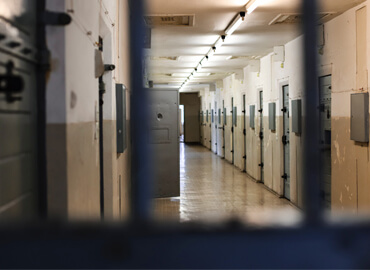It is not only scientists and academics that are talking about the climate today, but also governments, management of global companies, investors, and banks. Decarbonization, one of the key concepts in today’s climate debate, means reducing greenhouse gas (GHG) emissions – primarily carbon dioxide or CO2 – per unit of GDP or per unit of energy generated. Decarbonization policies have already become mainstream in the EU and the U.S. at both the state and corporate levels, and, accordingly, its impact on global economic development is increasing every day.
Climate policy has already become an integral part of global business. At routine meetings of the boards of global corporations, topics discussed include the transition from oil and coal to renewable energy sources (RES), the development of in-house renewable energy sources (solar panels on the roofs of factories, joint ownership of wind farms, etc.), cooperation on projects with local authorities, NGOs, and branches of other companies with the goal of accelerating decarbonization and strengthening the supply of clean energy in local markets. In 2020, CDP – a global platform for information on climate and environmental impact, which currently brings together 600 investors with a combined net worth of $110 billion and a purchasing power of $4 billion – broke all previous records and collected data on impact on climate from 9600 companies from all over the world. This is 70% more than in 2015. There are no Belarusian companies in their list. (For comparison, 60 Russian companies received an invitation to participate and 25 provided data.)
Other key players in the world arena – banks and investors – have also changed their attitude towards the issue of global warming. For a long time, they were largely indifferent, as companies’ ratings and were based solely on financial indicators. But the situation has changed. A couple of years ago, a new type of risk appeared in financial analysis – climate risk. And it is not just for show, but often with sincere interest and is used as a basis for future strategic decisions. Decarbonization of production is becoming one of the key indicators in the ESG ratings of companies. Both banks and companies looking for new investments use the CDP to collect data on potential financing targets.
Many countries today already have legislation regulating greenhouse gas emissions and measures to reduce them and to adapt infrastructure to the effects of climate change. U.S. lawmakers are taking active steps towards clean energy and reducing greenhouse gas emissions. The enormous Green Deal package launched by the EU in 2019 (where the EU pledges to cut greenhouse gas emissions by 55% by 2030 and become climate neutral in 2050) is nothing more than an attempt to take on the role of world leader in decarbonization policy. A new European taxonomy is coming soon to guide investment in sustainable goods. Since 2005, the EU, Iceland, Norway, and Lichtenstein have operated an Emissions Trading System (EU ETS), under which industries are given quotas for greenhouse gas emissions. The EU is currently preparing a new law (Carbon Border Adjustment Mechanism – CBAM), which could become a turning point for many EU supplier countries, including Belarus.
According to CBAM, goods imported into the EU will be subject to a kind of duty in the form of a certificate, the value of which depends on the carbon intensity of the imported product in euros per tonne of CO2.
That is, the more CO2 emitted during the production of a product, say, in Bobruisk, the higher the cost of this product for a buyer from Rotterdam.
The civilized world is decarbonized. Public and private investment is channeled into the renewable energy sector, financial support for the coal industry is dwindling, and companies are rethinking supplier networks in favor of those that are more climate aware. How could this situation affect Belarus?
To answer this, one must look at the full Belarusian energy picture.
How is it for us?
A developed country with a relatively high rate of consumption, Belarus is in the top 20 most energy dependent countries. About half of energy goes to the needs of the industrial and transport sectors, while a quarter is used to heat and light the homes of Belarusians.
According to Belstat, 62% of energy in Belarus in 2019 was produced by burning natural gas and 28% by oil. Coal and peat accounted for only 3%, while biofuels (biogas and firewood) and waste accounted for 6%. The most important type of fuel in the Belarusian energy sector – natural gas – comes from Russia, whereas oil come from CIS countries. This means that GHG emissions in Belarus come from the burning of imported fossil fuels.
Of Belarusian energy sources, only the last category – biofuels and waste – can be considered conditionally carbon-neutral, whereas the remainder of sources, more than 90%, are fossil fuels. On the one hand, this is bad because the burning of fossil fuels entails significant greenhouse gas emissions. On the other hand, it is completely normal: on average 84% of energy throughout the world in 2019 was produced from fossil sources, and this will remain like this for a long time. The entire modern world as we know it is built on fossil fuels, and without them we would not last even a day.
Petroleum products are traditionally included in the list of the most important export goods of Belarus. According to Belstat data for 2020, mineral products, which include oil and petroleum products, accounted for 13% of total exports. This is the fourth most important category after chemical products (20%), food products (20%), and transport and equipment (19%). Belarusian exports are geared towards hydrocarbons: a third of export goods are made from raw fossil materials (solvents and tires) and one-fifth run exclusively on fossil fuels (tractors and trucks). Timid steps forward, such as the planning of sales of a locally manufactured electric car this year, are offset by backward leaps, such as the halt in the production of Belarusian biodiesel fuel.
Belarus is committed to reducing greenhouse gas emissions by 28% by 2030 compared to 1990. The figure is impressive – almost a third! But if you look closely a completely different picture emerges:
Since greenhouse gas emissions fell by almost 50% between 1990 and 2002, a 28% reduction for the 1990-2030 period in fact means a doubling in emissions between 2002-2030. The sharp decline in GHG emissions from 1990 to 1995 is due to the crisis after collapse of the Soviet Union. The subsequent reduction of 1995-2002 is attributed to energy efficiency, energy conservation, and renewable energy activities, which consumed 1.6% of GDP. Thereafter, investments in reducing greenhouse gases have grown to 5% of GDP by 2015, however the greenhouse gas curve is steadily creeping upward. Although there was a slight decline in 2020 due to the pandemic, growth again is predicted for 2021-2030.
Last fall, the Director of the Energy Efficiency Department, Mikhail Malashenko, said that the plans for the near future are to move away from natural gas imports and actively develop local renewable and low-carbon energy sources:
«In the next five-year period, we plan on commissioning at least 500 MW of heat generating capacities using biofuels in the housing and communal services system. We also expect that in the next five years, along with the commissioning of the nuclear power plant, new electrical technologies will be developed that will make it possible to eliminate natural gas and oil products from the fuel and energy balance as much as possible. Plans include the development of renewable energy sources and their maximum integration into the energy grid.»
Unfortunately, more specific information on measures planned and taken could not be found. But it is already known that, despite the recent commissioning of the nuclear power plant, this year the volume of natural gas imports increased by 1 billion cubic meters.
Effective decarbonization is expensive. According to official documents on the reduction of greenhouse gases, Belarus is solving its climate problems in proud isolation:
«These obligations (note from reform.by – to reduce GHG) are based only on the internal potential of the country and are taken on without any additional conditions for the potential to attract financial resources from abroad for making use of the best available technologies.»
The relationship between the Belarusian authorities and foreign investors is a popular topic for jokes. From 2011 to 2020, the volume of foreign investment in the Belarusian economy decreased by 54%. Recently, news arrived about the blocking of funds that were supposed to go to repairing Belarusian infrastructure on account of European sanctions.
The situation then is that while European companies are seriously engaged in the decarbonization of their entire value chain (that is, from suppliers of raw materials to the disposal of the final product), Belarus continues to burn imported fossil fuels and no concrete effective steps have been taken to reduce greenhouse gases, whether in the state plan for transitioning to renewable energy sources or in attracting foreign investment for Belarusian decarbonization.
Where are the pitfalls?
According to the Belarusian Foreign Ministry’s website, the main trade partners of Belarus are Russia (45% of exports) and the European Union (Poland, Lithuania, Germany, Great Britain, the Netherlands, Latvia, Denmark, Belgium, and Norway – 20% of exports). In addition, trade with the countries of Asia, Africa, the U.S., and Oceania is expanding.
In other words, about 20% of Belarus’s current trading partners are countries that are actively working on climate issues. Even if today some of these companies do not have their own plans to decarbonize their products, in a couple of years changes in European legislation may lead to the reconsideration of importing from Belarus.
With the introduction of the CBAM (described above), the competitiveness of Belarusian goods may decline. Within the framework of the CBAM, the price of the certificate will be calculated based on the volume of CO2 emissions from the production of imported goods. The proposed legislation covers the following categories of goods: aluminum, cement, fertilizers, electricity, iron, and steel. The lower the carbon intensity of the production of these goods (e.g., a low ratio of a tonne of CO2 to a unit of currency sold), the better. Developed countries are unlikely to feel any consequences of the CBAM, as most of them are already working on the decarbonization of the economy in general and carbon-intensive sectors specifically.
It should be noted that the Belarusian carbon dioxide emission coefficient for electricity given by the International Energy Agency average and that many European countries are much higher (e.g., coal-fired Poland and Serbia). But the decarbonization of these countries is already taking place, while Belarus, apparently, will not use this slight advantage to strengthen its trade positions.
Not only carbon
Decarbonization is a long, complicated, and expensive process. But despite all the challenges and costs, the powers that be will not limit themselves to decarbonization. The EU is looking actively at social aspects of sustainable development, foremost human rights, in the EU and among suppliers from third countries. Some governments have long required businesses to report on human rights abuses in detail, such as the Modern Slavery Act in the UK. And starting next year, the EU will begin enforcing the requirement to conduct mandatory due diligence in the field of human rights (EU Mandatory Human Rights Due Diligence Directive), which will directly affect those Belarusian businesses that work for the European market. Soon (in 2023), a law will come into force in Germany requiring all large companies to report on the risks associated with environmental destruction and human rights violations from their direct suppliers. And it should be noted that the German market is far from the smallest for Belarus.
And these are just a few examples of how the development of world legislation aimed at improving things globally can negatively affect the Belarusian economy. If we assume that Belarus is doing the minimum necessary at this initial stage to better fit into what the world looks like, we will get plans to (1) reduce greenhouse gases and improve the environment (improving water, air, and soil quality while protecting biological diversity, etc.) and (2) improve the human rights situation (though it is awkward to comment and give examples here).
Things are already heating up
Today, perhaps only the keen eye of experts could spot dark clouds on the horizon of Belarusian exports. But they are there, and if concrete steps are not taken now, in a couple of years Belarusian business may find itself in an extremely uncomfortable position.
Without data on the impact of Belarusian businesses on the environment, it is impossible to set realistic goals and determine a plan of action. This means that the greenhouse gas emission coefficient, at best, will remain at the same level and, at worst, will grow along with greenhouse gas emissions in Belarus. (Since we do not measure them, we have no control over them.) It will take some time to develop and implement processes and procedures for generating climate impact data. Without these data, goods from Belarus will eventually be taxed, which grows with each ton of CO2. In addition to the upcoming CO2 tax, business with Belarus is already becoming less and less attractive due to numerous EU and US sanctions. And in the future, new legal requirements for human rights will also be added. All this is just the beginning.
There is still a chance. Belarus can carry out the necessary modernization and adapt to a new reality. But we must act now.
Anna Elistratova,
MBA, climate and sustainable development specialist. Author of the book Choosing Sustainable Development: Methods for Solving the Problems of the Future
Материал доступен на русском языке: Декарбонизация мира. Готова ли к ней Беларусь?










